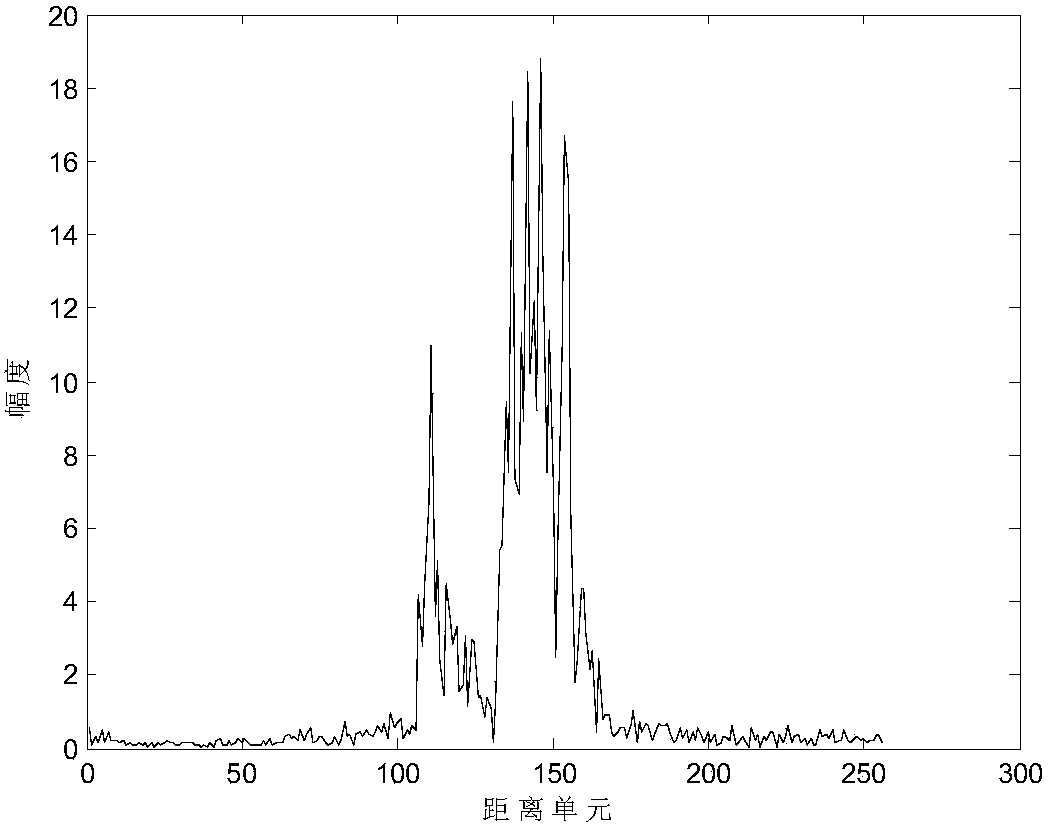Factor analysis model-based high resolution range profile self-adaptive framing method
A technology of factor analysis model and distance image, applied in the field of signal recognition, can solve problems such as unreasonable, poor consideration of HRRP noise, and no noise consideration
- Summary
- Abstract
- Description
- Claims
- Application Information
AI Technical Summary
Problems solved by technology
Method used
Image
Examples
Embodiment
[0059] The present invention provides a one-dimensional range image adaptive framing method based on factor analysis model, the general flow chart is as follows figure 1 shown. The existing one-dimensional range image echo data of an aircraft are as follows: figure 2 As shown, in the actual situation, the echoes of different types of aircraft are different, and the same type of aircraft also has a large difference with the change of attitude. The 3 types of aircraft target flight trajectories used in the present invention are as follows: image 3 shown. The invention mainly solves the frame-by-frame recognition problem of this kind of one-dimensional echo signal. Include the following steps:
[0060] Training phase:
[0061] Step 1: For the training sample set X=[x 1 ,x 2 ,...,x M ], (x n ∈R 2m ) to extract its normalized frequency spectrum magnitude feature P=[p 1 ,p 2 ,...,p M ], (p n ∈R m ),like Figure 4 shown;
[0062] p i =|FFT(x i )|,i=1,2,..M (1)
...
PUM
 Login to View More
Login to View More Abstract
Description
Claims
Application Information
 Login to View More
Login to View More - R&D
- Intellectual Property
- Life Sciences
- Materials
- Tech Scout
- Unparalleled Data Quality
- Higher Quality Content
- 60% Fewer Hallucinations
Browse by: Latest US Patents, China's latest patents, Technical Efficacy Thesaurus, Application Domain, Technology Topic, Popular Technical Reports.
© 2025 PatSnap. All rights reserved.Legal|Privacy policy|Modern Slavery Act Transparency Statement|Sitemap|About US| Contact US: help@patsnap.com



